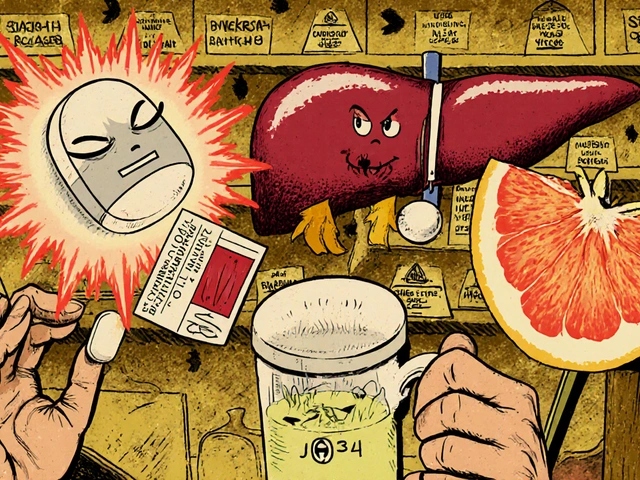Gabapentin Alternatives: What Works Best for Nerve Pain and Seizures
If you’ve been prescribed gabapentin and wonder about other choices, you’re not alone. Many people stop gabapentin because of drowsiness, swelling, or simply because it doesn’t control their symptoms well enough. The good news? There are several medications and non‑drug options that can step in, often with a different side‑effect profile.
Before you swap anything, talk to your doctor. Gabapentin is used for nerve pain, seizures, restless leg syndrome, and a few off‑label conditions. Your doctor will consider why you’re on it, how severe your symptoms are, and what other health issues you have. That conversation sets the stage for a safe switch.
Why Look for Alternatives?
Side effects are the most common reason people search for a new drug. Gabapentin can cause dizziness, fatigue, weight gain, and swelling in the legs. Some patients also develop tolerance, meaning the dose you once needed no longer works. Cost can be another factor – generic gabapentin is cheap, but insurance coverage varies, and a newer drug might be covered better.
Another reason is drug interactions. If you’re taking opioids, antihistamines, or certain heart meds, gabapentin can boost their sedative effects. A different medication might avoid that risky combo.
Common Substitutes and What They Do
Pregabalin (Lyrica) is the closest cousin to gabapentin. It works the same way on nerve signals but often has a quicker onset. Some people find it less drowsy, though it can still cause swelling. Your doctor may start you at a low dose and adjust based on how you feel.
Duloxetine (Cymbalta) is an antidepressant that also relieves nerve pain. It’s especially good for diabetic neuropathy and chronic back pain. If you have mood concerns along with pain, duloxetine can hit two birds with one pill. Watch out for nausea and increased blood pressure.
Carbamazepine (Tegretol) is an older seizure drug that also treats trigeminal neuralgia, a severe facial nerve pain. It can be effective when gabapentin fails, but it needs blood tests to monitor for liver issues.
Topiramate (Topamax) and lamotrigine (Lamictal) are other seizure medications that sometimes help nerve pain. They have different side‑effect patterns – topiramate may cause tingling or taste changes, while lamotrigine can cause skin rashes that need immediate medical attention.
For people who want to avoid pills altogether, capsaicin patches and transcutaneous electrical nerve stimulation (TENS) can reduce localized nerve pain. They don’t replace a systemic drug but can lower the dose you need.
When you decide on an alternative, consider the dosage schedule. Some meds, like pregabalin, are taken twice daily, while duloxetine is once daily. Fewer doses often mean better adherence.
Finally, keep an eye on your body. Any new drug can bring unexpected side effects. If you notice swelling, rapid weight gain, or mood swings, let your doctor know right away. Adjustments are normal, and most issues resolve with a dose tweak or a different choice.
Switching from gabapentin doesn’t have to feel like a gamble. With the right information and a clear line to your healthcare provider, you can find a substitute that eases your pain, controls seizures, and fits your lifestyle. Take one step at a time, track how you feel, and remember that the best option is the one that works for you without unwanted side effects.





